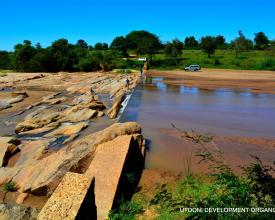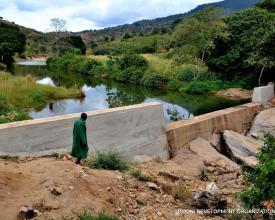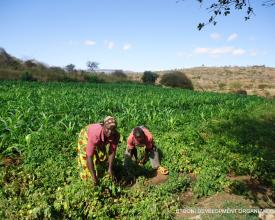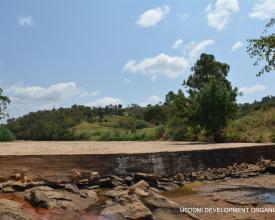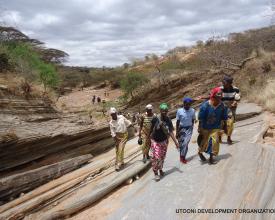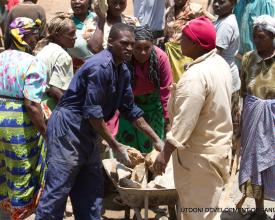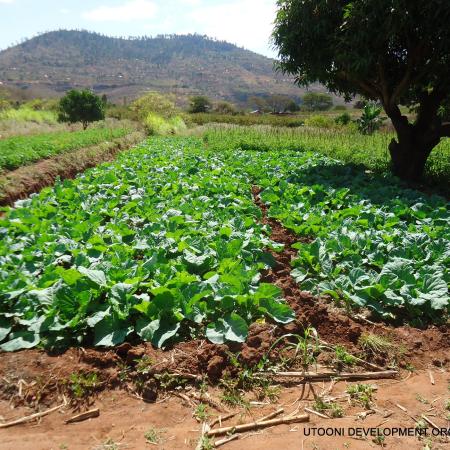
Sand dams for climate resilience and food security in arid and semi-arid landscapes
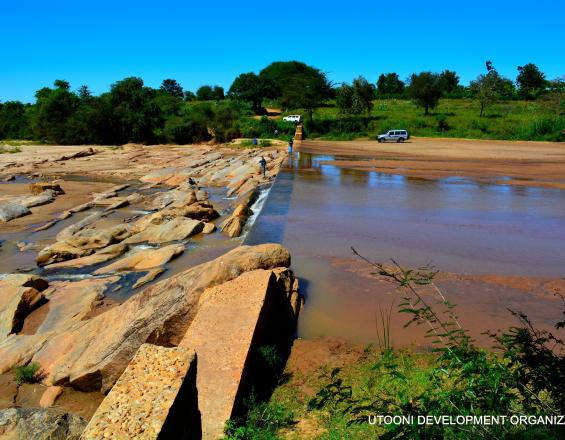
Utooni Development Organization (UDO) is a non-governmental organization established in 2002 and registered in 2005. It is based on the early works of Utooni Development Project, a community-based self help group formed by Joshua Mukusya in 1978. Its vision is to build peaceful, healthy and happy interlinked self-sufficient communities through justified sustainable development.
The organization supports disadvantaged communities living in the arid and semi arid lands to transform their environment in a sustainable manner, enabling them to improve water supply, food production, income and health.
Context
Challenges addressed
- Climate Change - causing erratic / unpredictable rainfall and rising temperatures.
- Food Insecurity caused by unreliable rainfall - many communities depend on rain-fed agriculture
- Lack of water for irrigation , livestock and household use.
- Mind Set: It is widely believed that Africa is a poor continent even by, Africans themselves
- Lack of funds to replicate good practices.
Location
Process
Summary of the process
The first building block describes technical planning aspects of the solution: From the material that should be used, to visibility and accurate measurements. A site survey can help minimize challenges before construction work begins.
The second building block focuses on implementation. Community participation and involvement is key to a smooth implementation process.
Building Blocks
How sand dams work
Sand dams (some times called more general groundwater dams) store water under the ground. A sand dam is a small dam build above ground and into the riverbed of a seasonal sand river. Sand accumulates upstream of the dam, resulting in additional groundwater storage capacity. Similar to sand dam a subsurface dam obstructs the groundwater flow of an aquifer and stores water below ground level. Sand and subsurface dams are suitable for rural areas with semi-arid climate in order to store only seasonal available water to be used in dry periods for livestock, minor irrigation as well as for domestic use.
Benefits include:
- Storage of rain water in seasonal rivers
- Minimum evaporation since water is stored in sand
- Reduction of contamination by livestock and other animals since water is under sand
- Filtration of water flowing through the riverbed sand improves water quality
Enabling factors
Sand dams can be built with locally available material and labour but building a dam still requires relatively high investments, is labour intensive and specific expertise is needed.
Lesson learned
The technology is labour and physical capital intensive. Depending on site location, some communities may not be able to implement it without some external aid.
Road Map for Sand dam implementation
Practical implementation steps include:
- Site selection and community involvement;
- Engineering and design;
- Water use assessment;
- Excavation and construction;
- Operation and maintenance (establishment of water management process, including: Water committee, care takers and provision of trainings)
- Monitoring and evaluation
Enabling factors
- The presence of communities (nomads or permanently during dry period)
- The slope of the river beds: the most suitable locations have a slope between 2 to 4 percent)
- Average width of the river, which should not exceed 25-50 meter
- The rivers should be underlain by bedrock
- Strong raised river banks
Lesson learned
The sand dam construction process is always unique for each site since it depends on topography, availability of local materials and community participation.
Impacts
Since we started, we have worked with 4,795 households in Kenya. The project supports farmers across three counties tin moving from from subsistence to sustainability, following a simple logical model of “Get water, get food, then get Income". We have managed to achieve the following impacts;
- Decreased distance to get water (one way) from an average of 10 kms to 1 km;
- Decreased time to get water from an average of 12 hours to 1 hour
- In 3 years we have increased number of farmers practising conservation agriculture from 5% to 50%, reaching 5,000 farmers.
- Increased the variety , crop yield while reducing the cost of farm inputs among farmers, leading to 30% increased income.
Beneficiaries
Communities living in Arid and Semi Arid Lands (ASALS)
This particular solution has been tested and implemented in three Kenyan counties, benefitting 4,795 households.
Sustainable Development Goals
Story

Droughts had pushed the Ngwate Ngutuike Self Help Group in Masii, Machakos County to extreme poverty, forcing them to find alternative ways to survive as relief from the government and other relief agencies couldn’t sustain them. Through two sand dam projects implemented with support from Utooni Development Organization, they have managed to abandon suboptimal farming practices and adopt more sustainable agricultural practices which guarantee them significant farm yields, even with minimal rainfall.
Through effective training programs, they have learned about water harvesting, irrigation and conservation agriculture.
